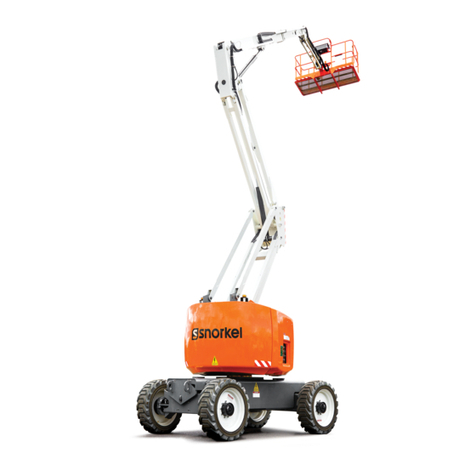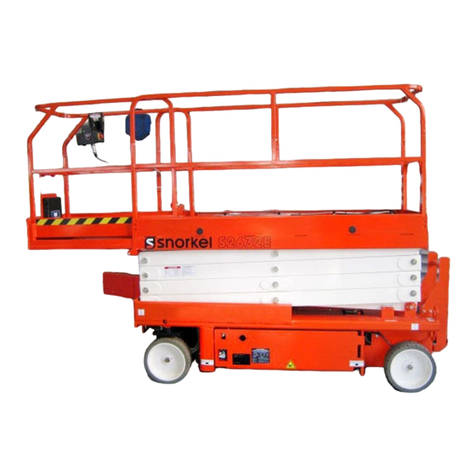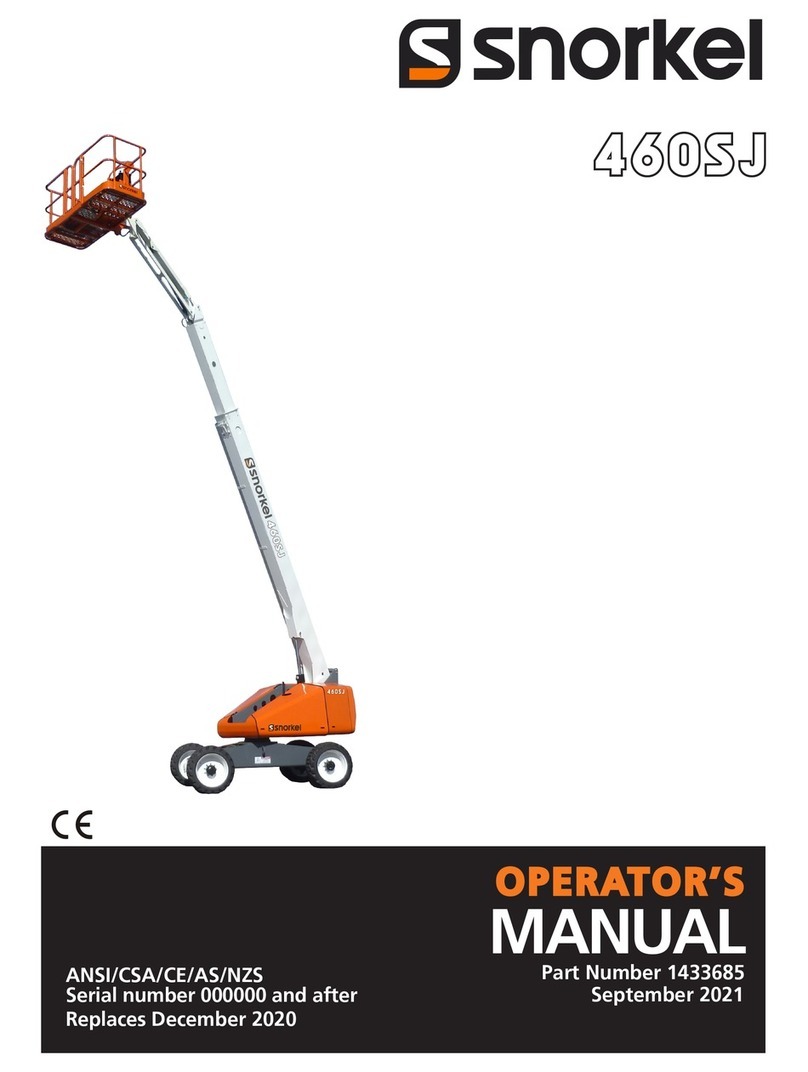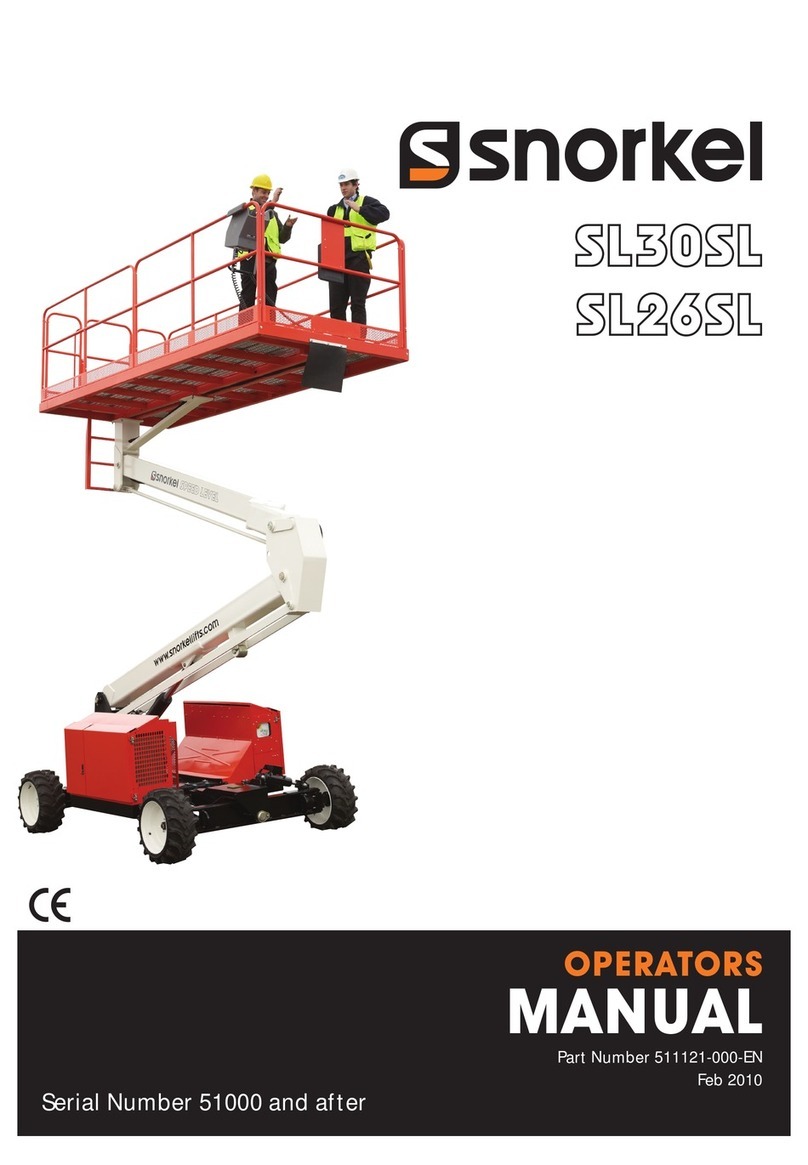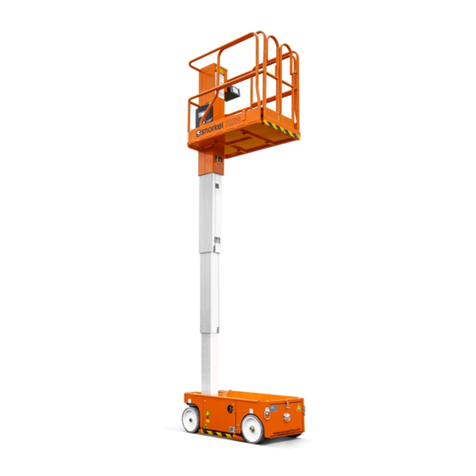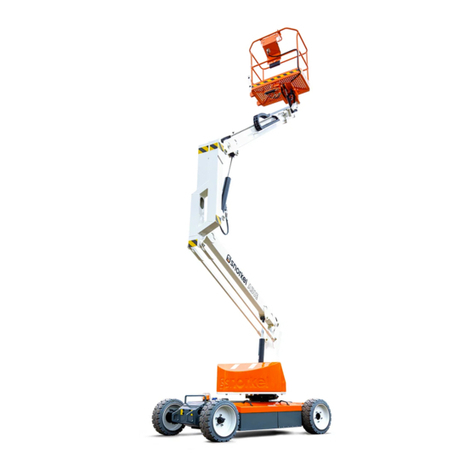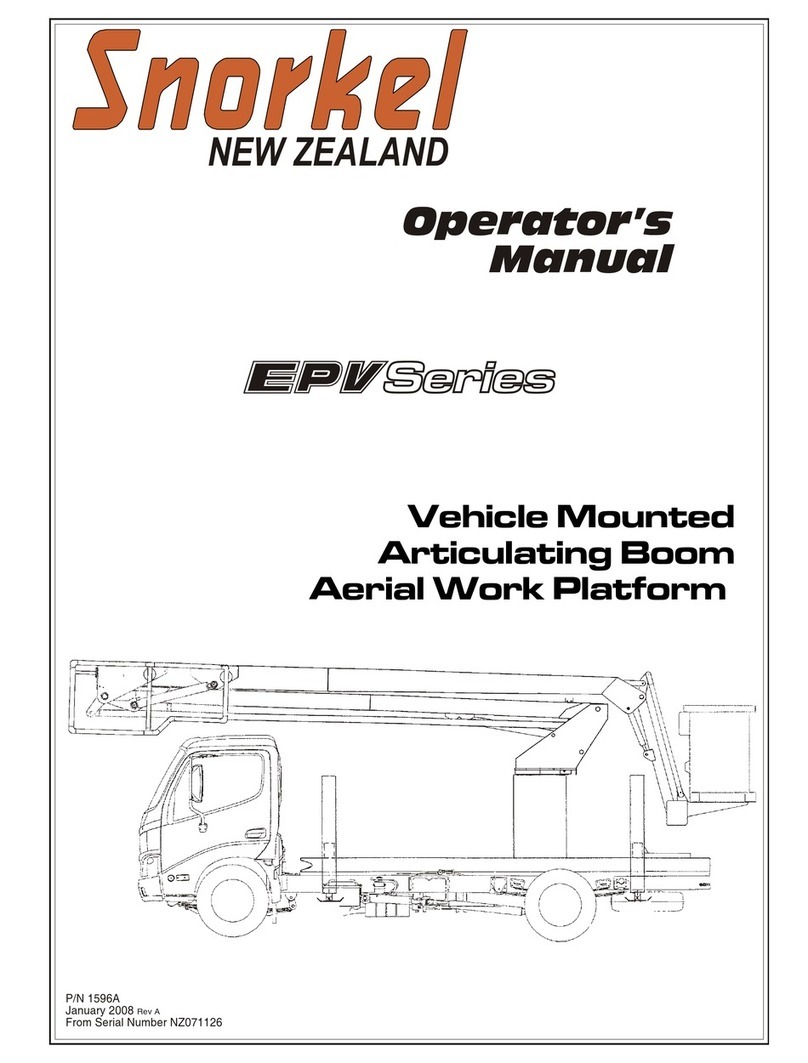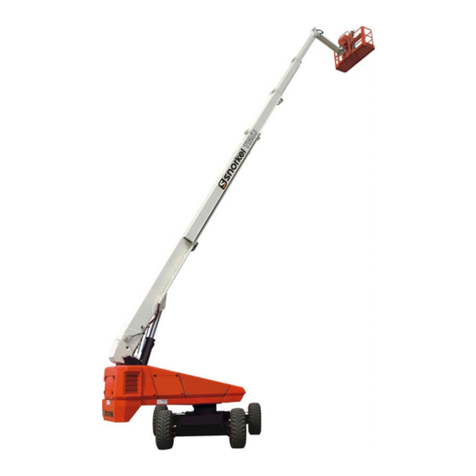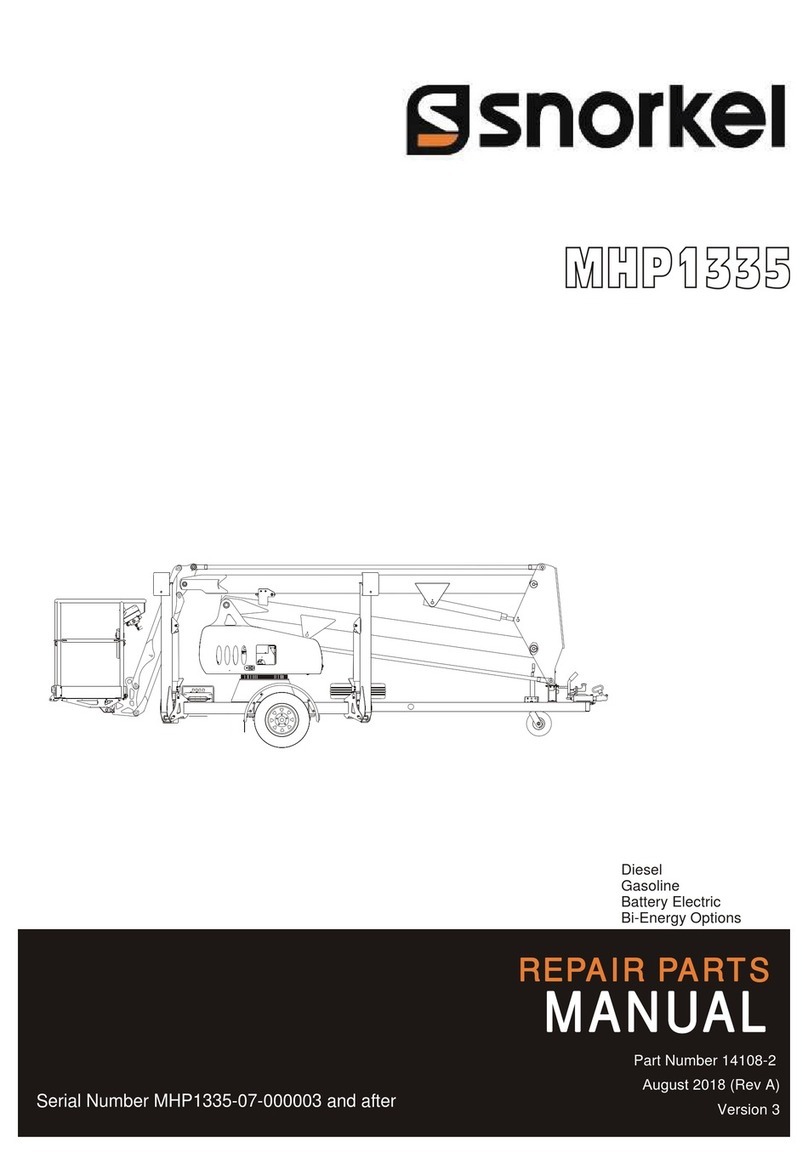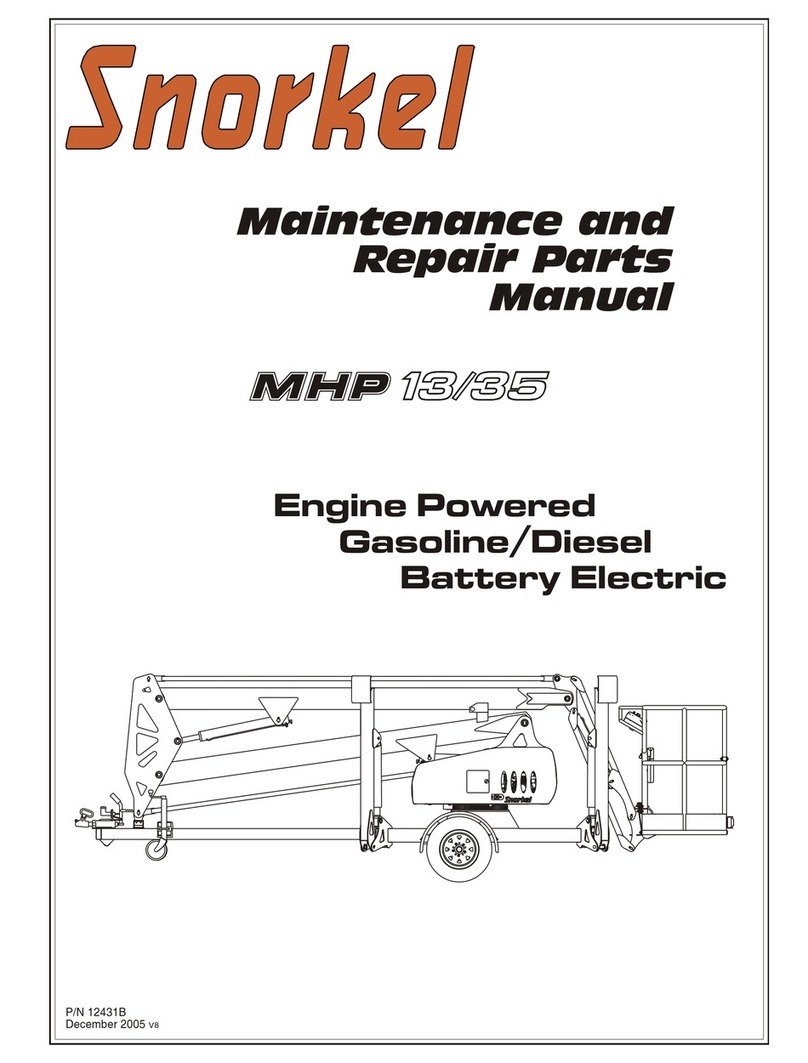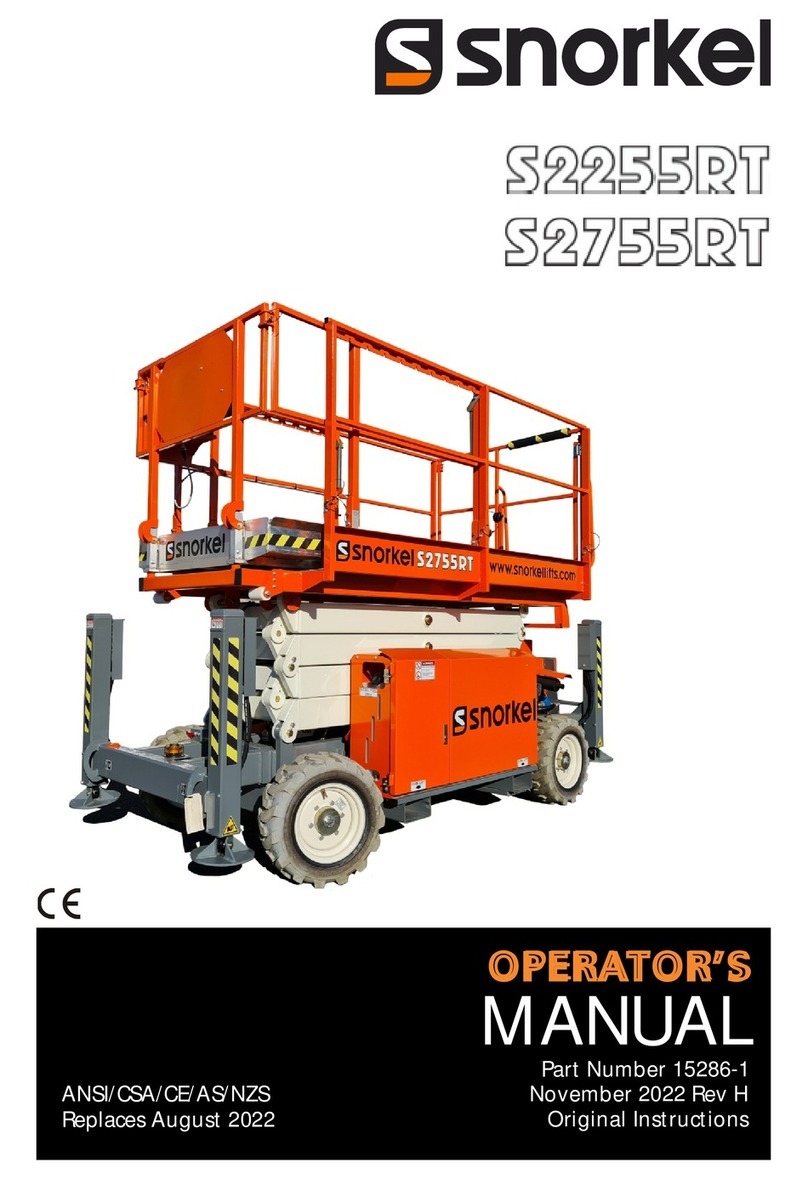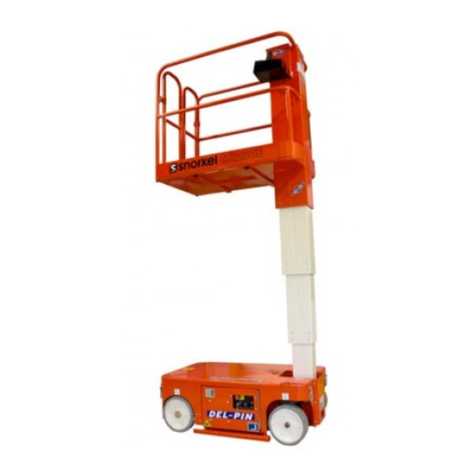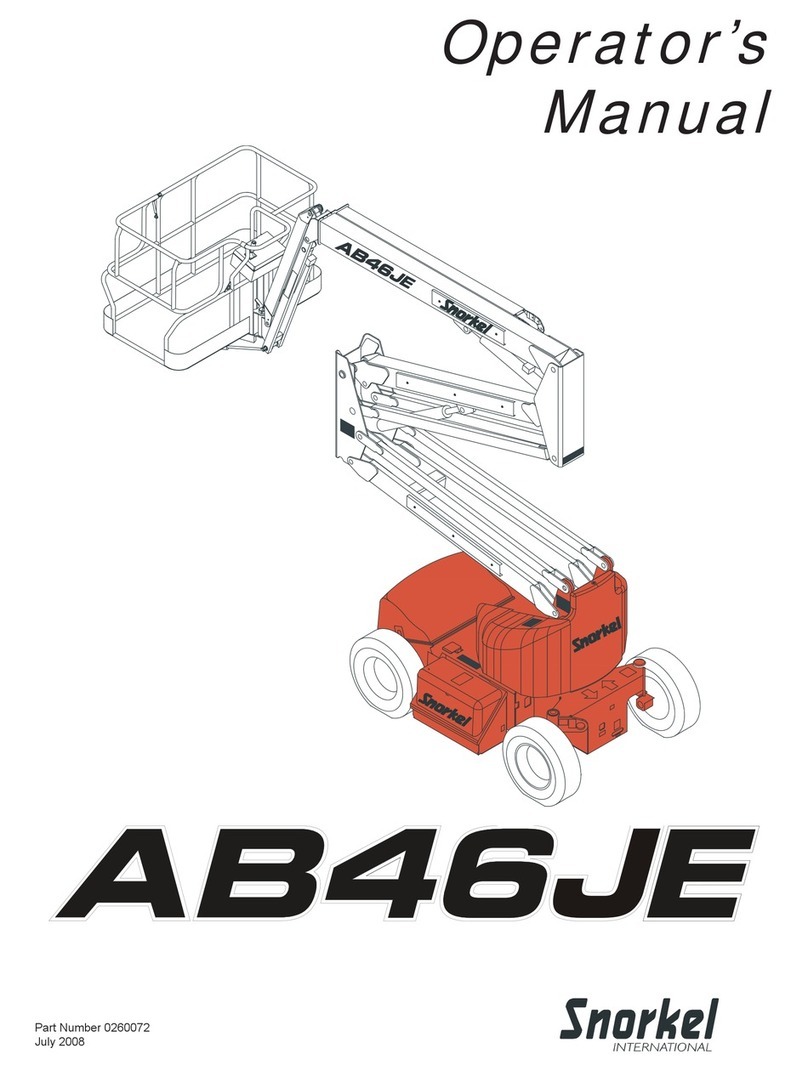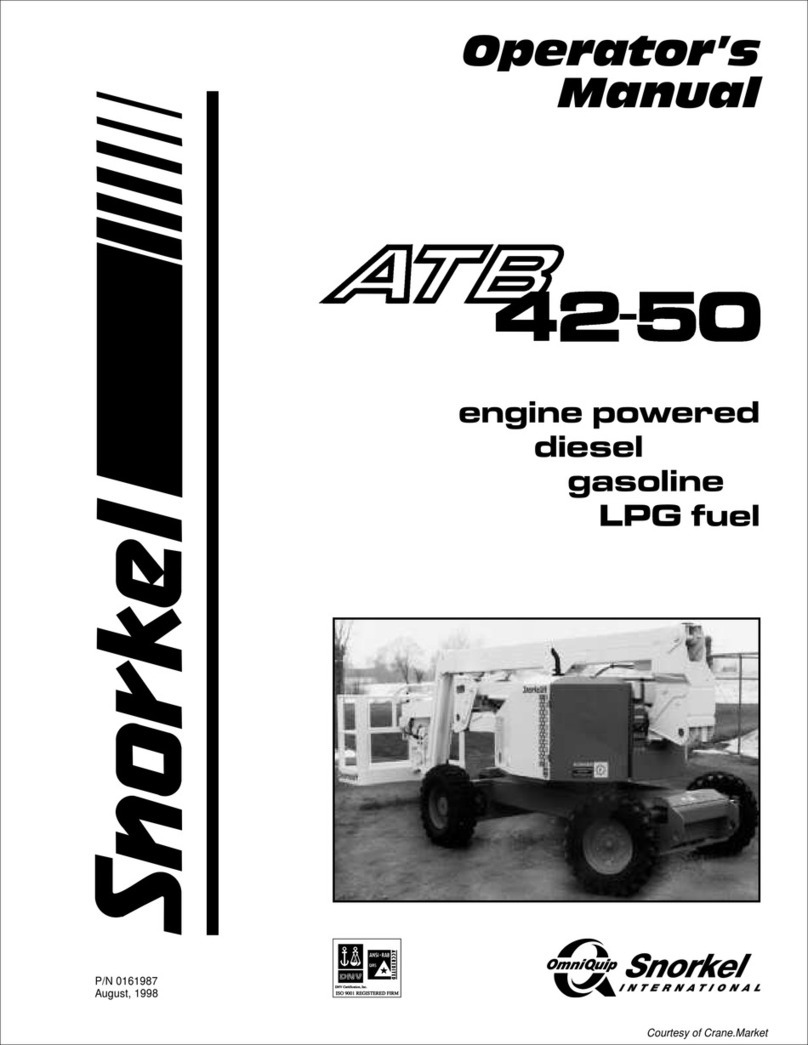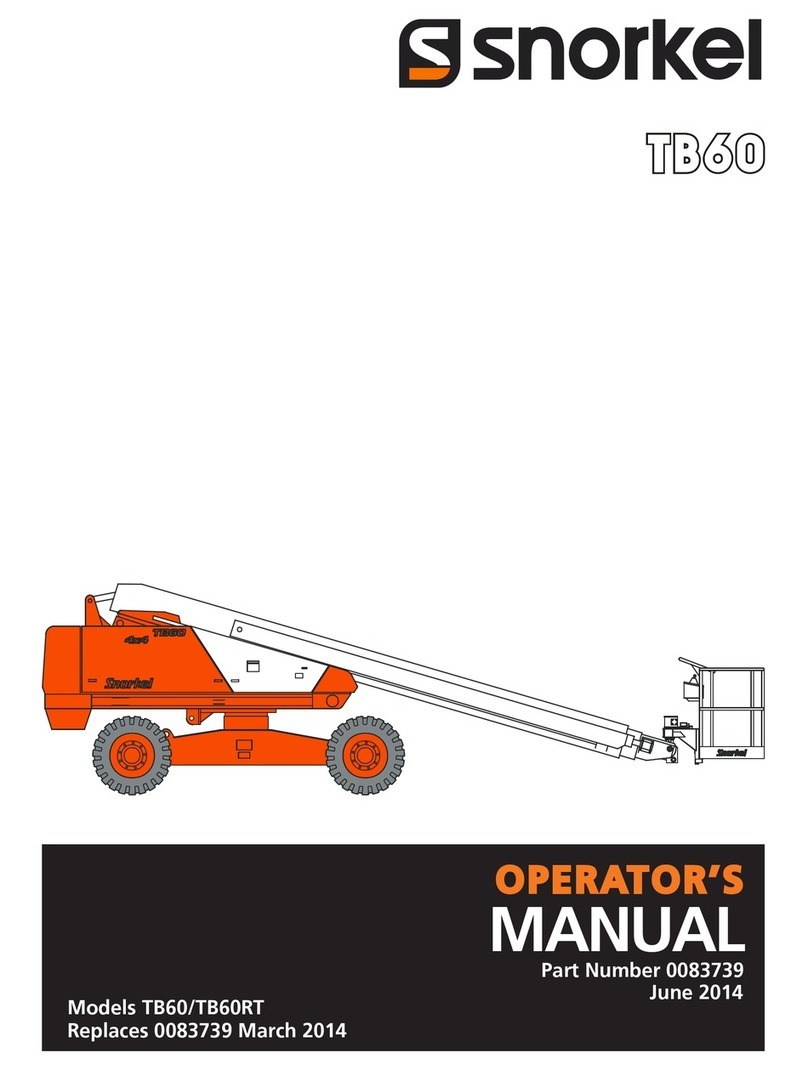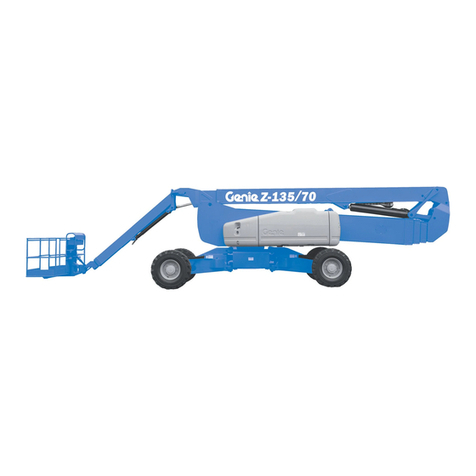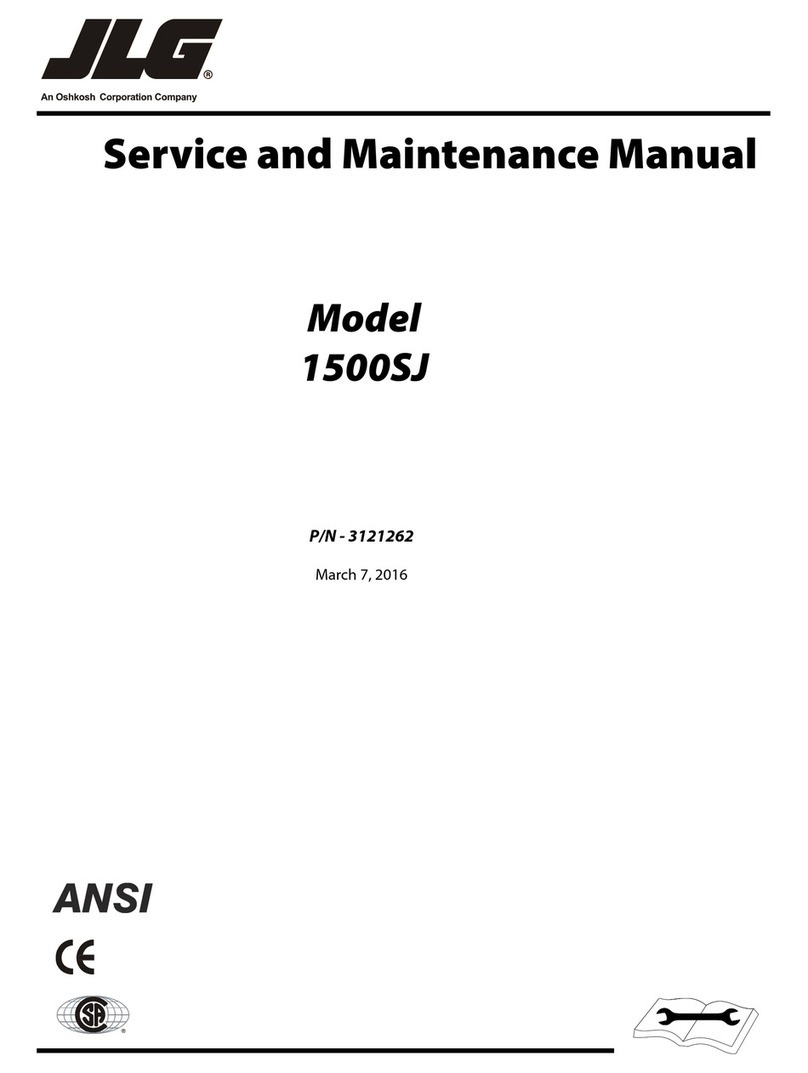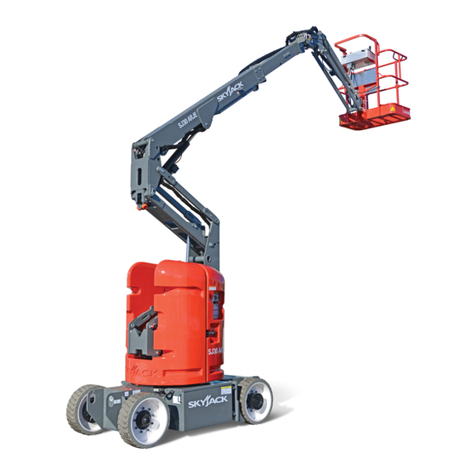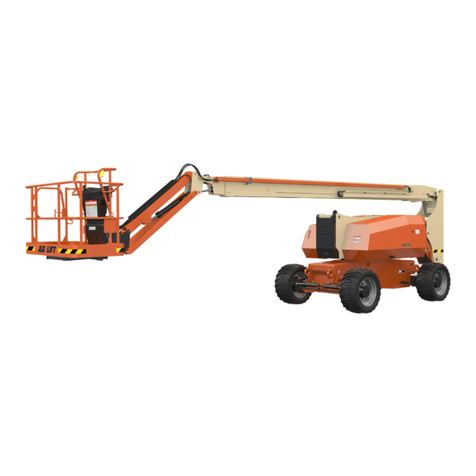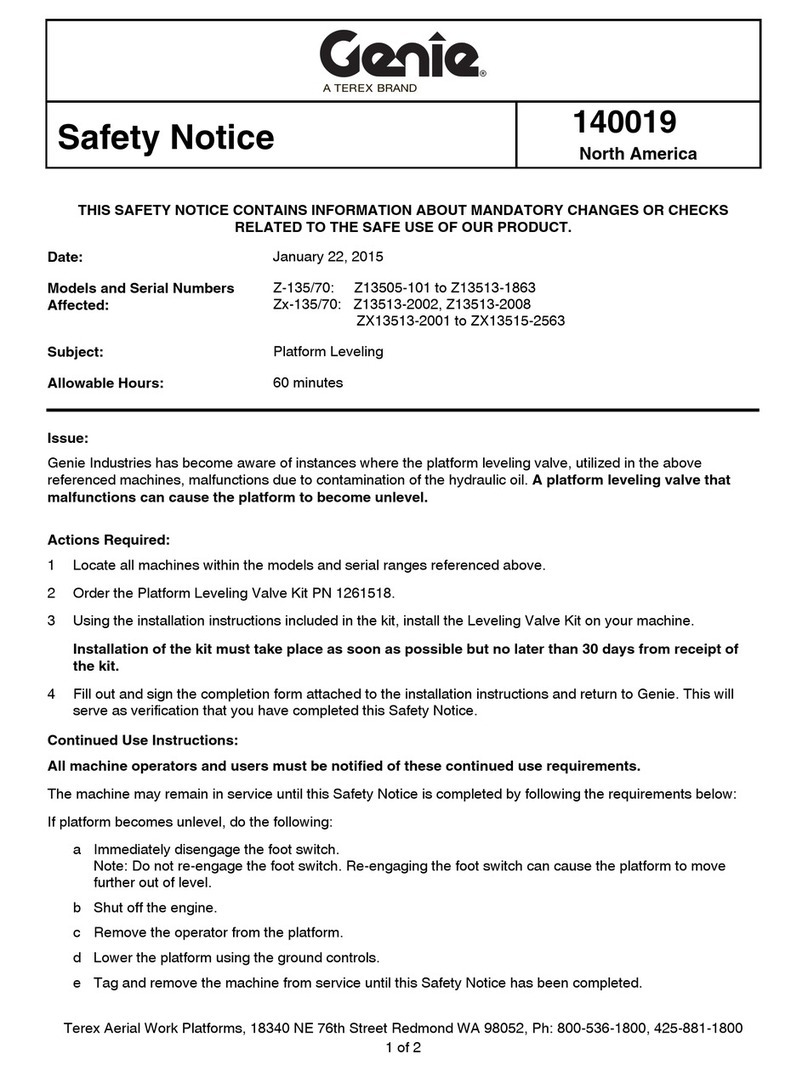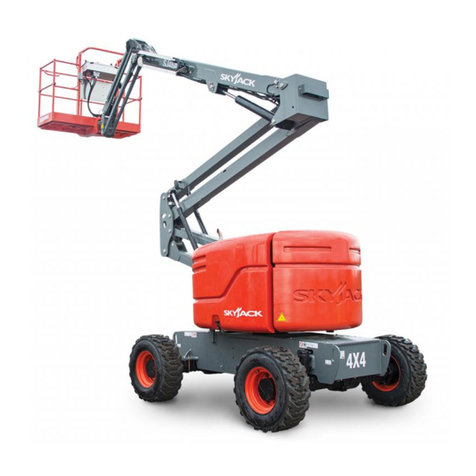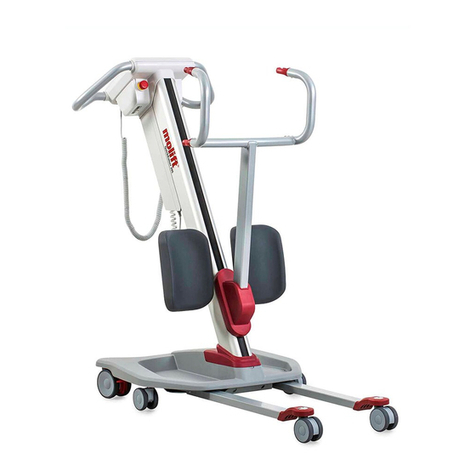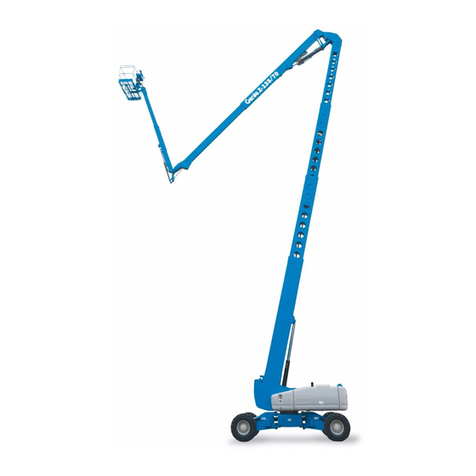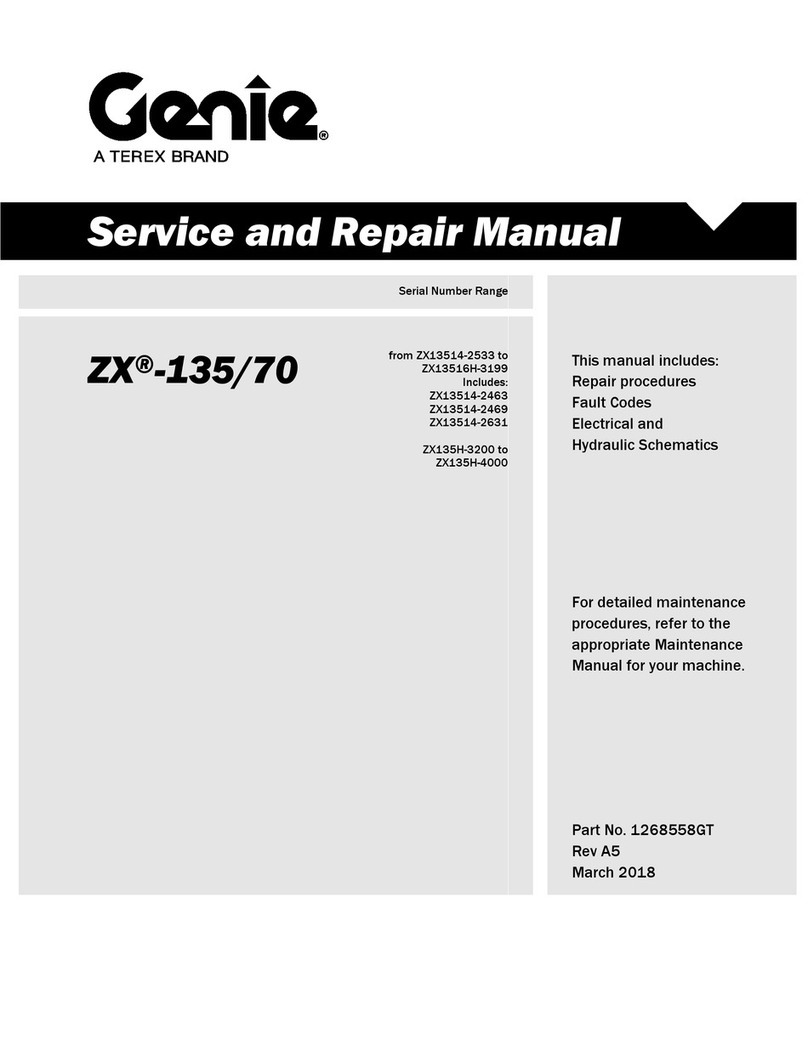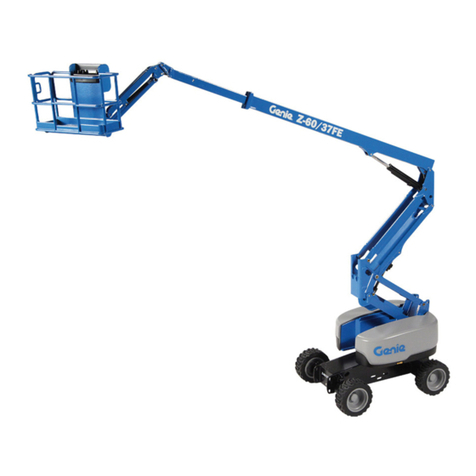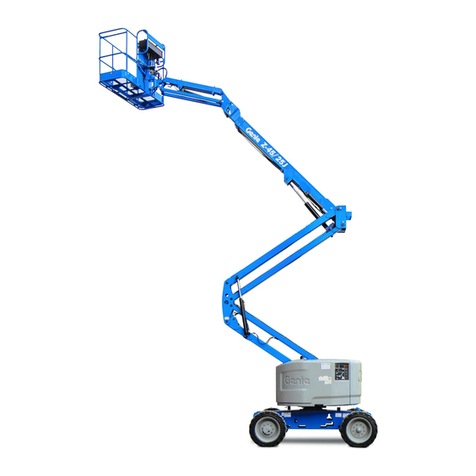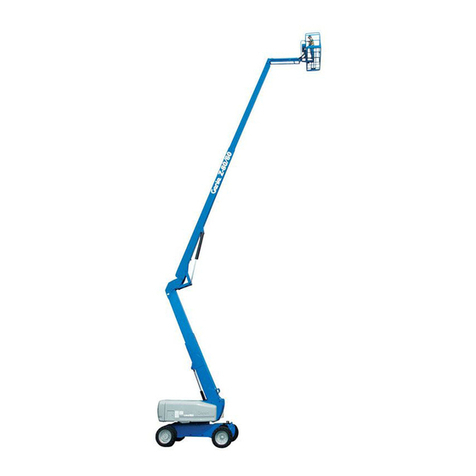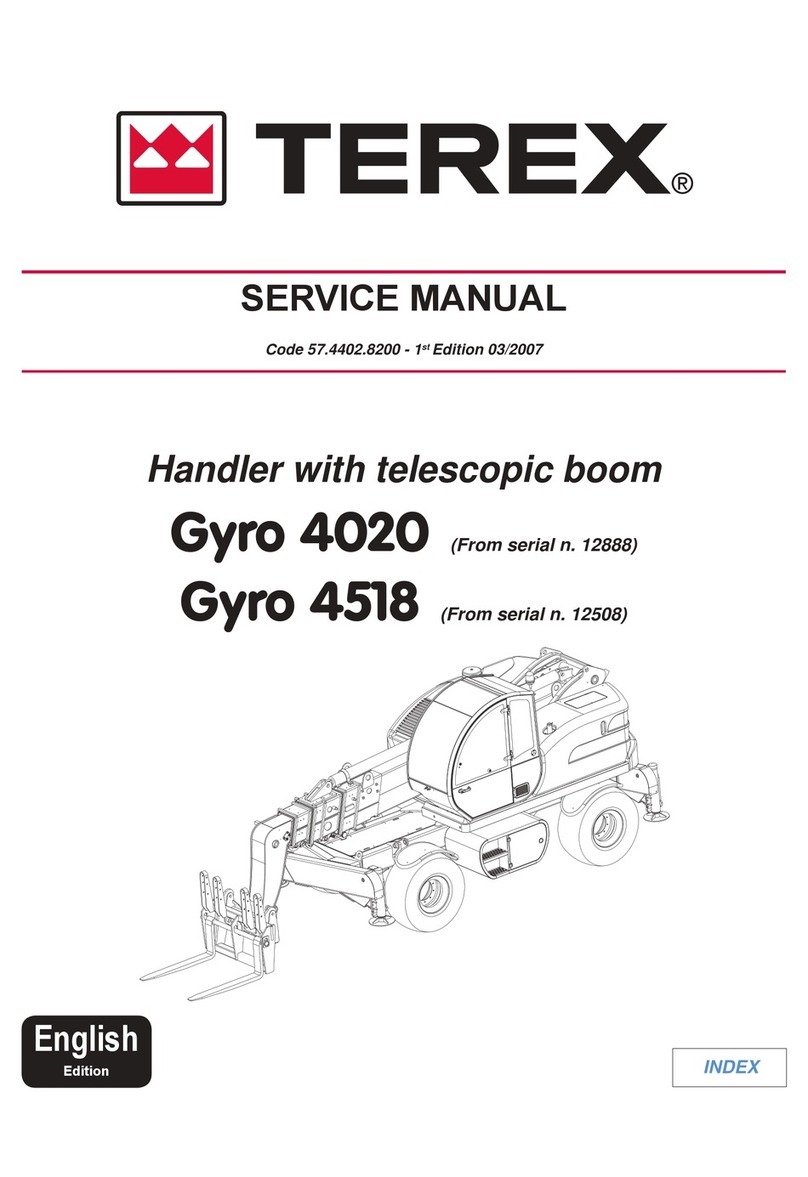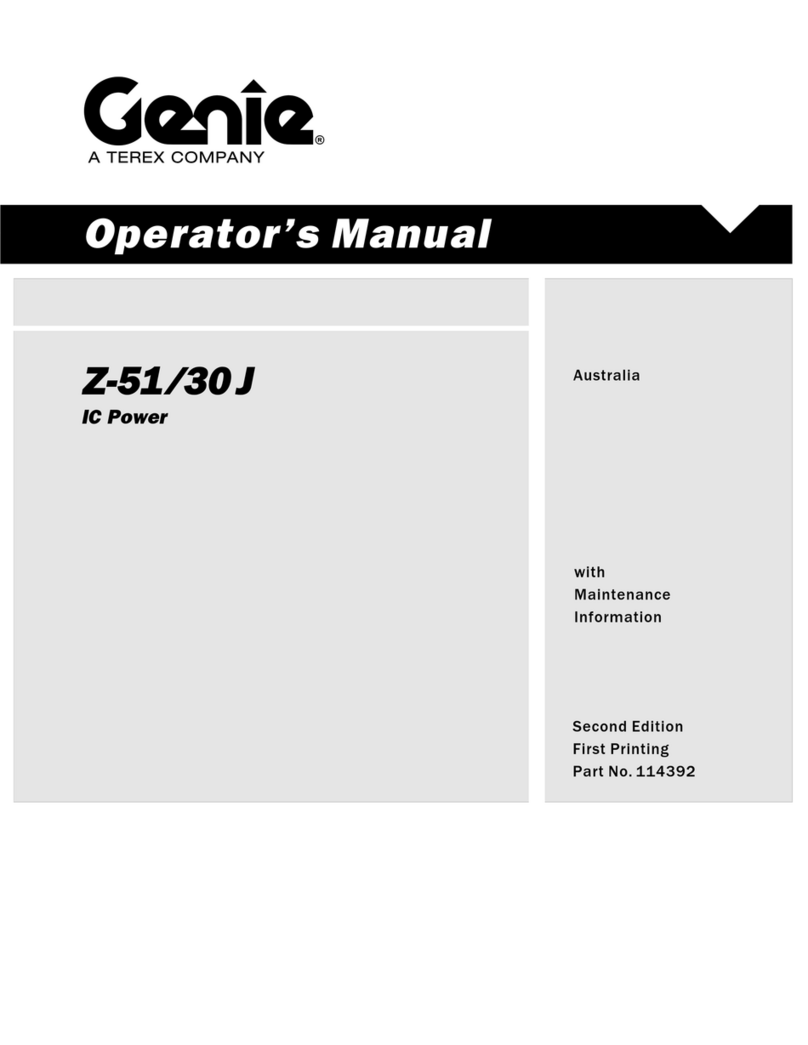
Always look in the direction of travel. Drive with
care and at speeds compatible with the work-place
conditions. Use caution when driving over rough
ground, on slopes, and when turning.
Do not engage in any form of “horseplay” or “stunt
driving” while operating the MHP13/35 / MHP15/44
V3.
Do not permit riders on the machine anyplace other
than on the platform.
Remove all loose objects stored in or on the ma-
chine, particularly in the platform. Remove all ob-
jects which do not belong in or on the machine.
Never steady the platform by positioning it against
another platform.
Do not operate an MHP13/35 / MHP15/44 V3 that
is damaged or not functioning properly. Do not use
the MHP until the machine has been repaired by a
qualified maintenance person.
Do not operate a MHP13/35 / MHP15/44 V3 that
does not have all its decals and placards attached
and legible.
Watch for bystanders and never allow anyone to be
under, or to reach through, the machine and its
equipment while operating.
Use the recommended transport device when
loading the machine.
■Operation
If you encounter any suspected malfunction of the
aerial platform, or any hazard or potentially unsafe
condition relating to capacity, intended use, or safe
operation, cease operation immediately and seek
assistance from management.
Use three (3) points of support when getting on or
off the platform ( two (2) hands and one (1) foot or a
similar set of points). Keep the platform clean.
Maintain a firm footing on the platform floor. Oper-
ate the controls slowly and deliberately to avoid
jerky and erratic operation. Always stop the con-
trols in neutral before going in the opposite direc-
tion.
Do not dismount while the platform is in motion or
jump off the machine.
Do not start until all personnel are clearly away
from the machine.
Never cover the floor grating or otherwise obstruct
your view below. Make sure the area below the
platform is free of personnel before lowering.
■Tipover and Falling Hazards
Operate the MHP only on a firm, flat, level surface
capable of withstanding all load forces imposed by
the MHP13/35 / MHP15/44 V3 in all operating
conditions.
The MHP can tip over if it becomes unstable.
Death or serious injury can result from a
tip-over accident. Do not drive or position
the MHP platform for elevated use near any
drop-ff, hole, slope, soft or uneven ground,
or other tip-over hazard.
Do not operate the MHP13/35 / MHP15/44 V3 from
a position on trucks, trailers, railway cars, floating
vessels, scaffolds, or similar equipment unless the
application is approved in writing by Snorkel.
Care shall be taken to prevent rope, electric cords,
and hoses, etc., from becoming entangled in the
aerial platform. If the platform or elevating
assembly becomes caught, snagged, or otherwise
prevented from normal motion by an adjacent
structure or other obstacle such that control
reversal does not free the platform, remove all
personnel from the platform before attempts are
made to free the platform using ground controls.
No person shall access or egress from the platform
in the elevated position (except in an emergency)
unless the requirements of AS2550.10 have been
met.
For full requirements refer directly to AS2550.10.
All platform occupants MUST wear and use safety
harness. Attach safety harnesss to the platform
lanyard anchor points.
Do not exceed the unrestricted platform capacity
as indicated on the capacity placard at the en-
trance to the platform. Do not carry loads from any
point outside of the platform.
Make sure that all protective guards, cowlings, and
doors are in place and secure. Be sure the guard-
rail system, including the gate, is in place and se-
cure.
Do not climb on the guardrails or use ladders,
planks, or other devices to extend or increase your
work position from the platform.
Do not use the MHP as a crane, hoist, or jack,or for
any other purpose other than to position personnel,
their tools, and materials.
Do not operate the MHP13/35 / MHP15/44 V3 in
winds, or wind gusts, of 28 mph, 45kph 12.5 m/s) or
more.
page 1- 2 Rev C MHP13/35 & MHP15/44 V3 – 13619-1
1. Safety
